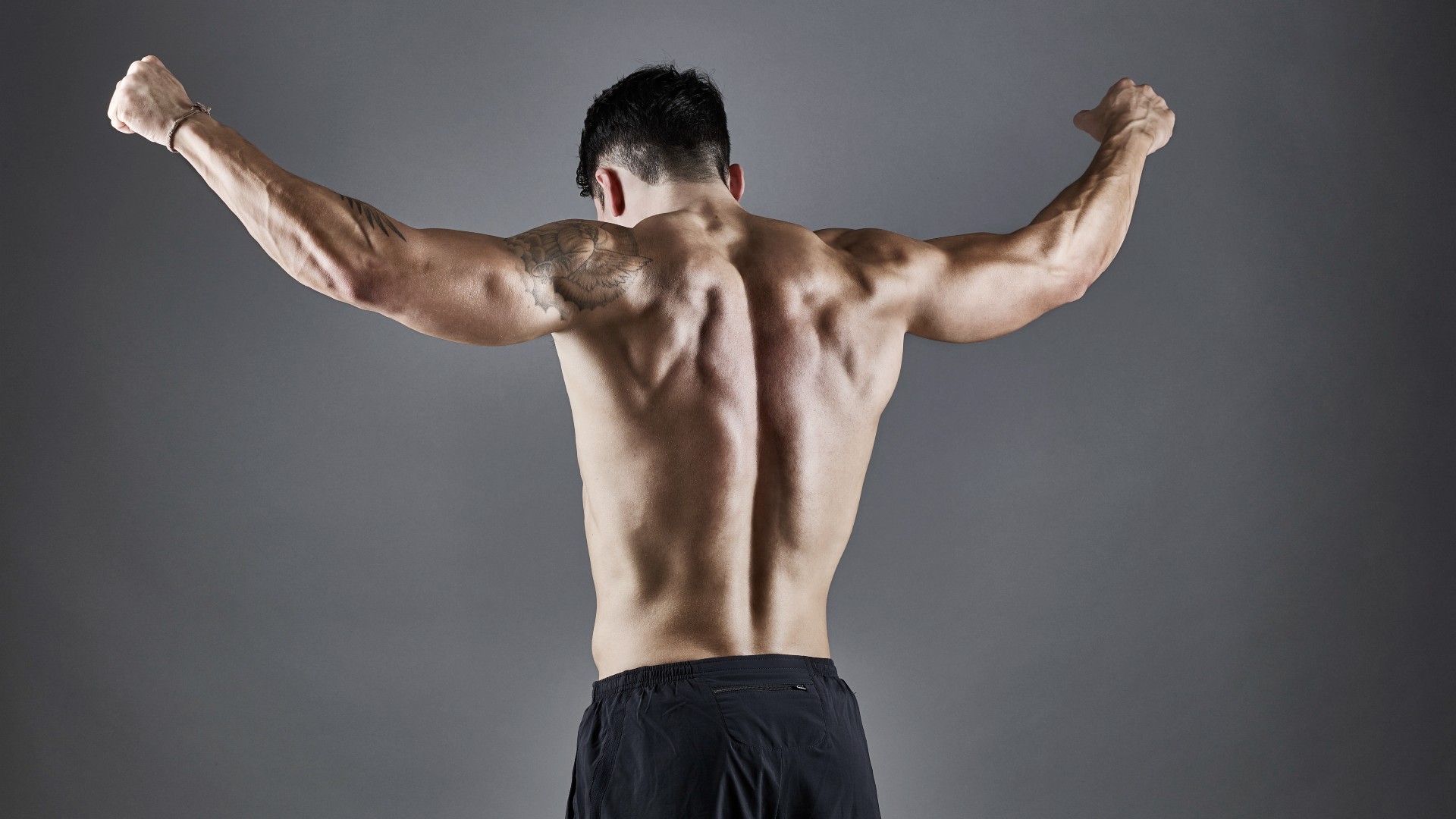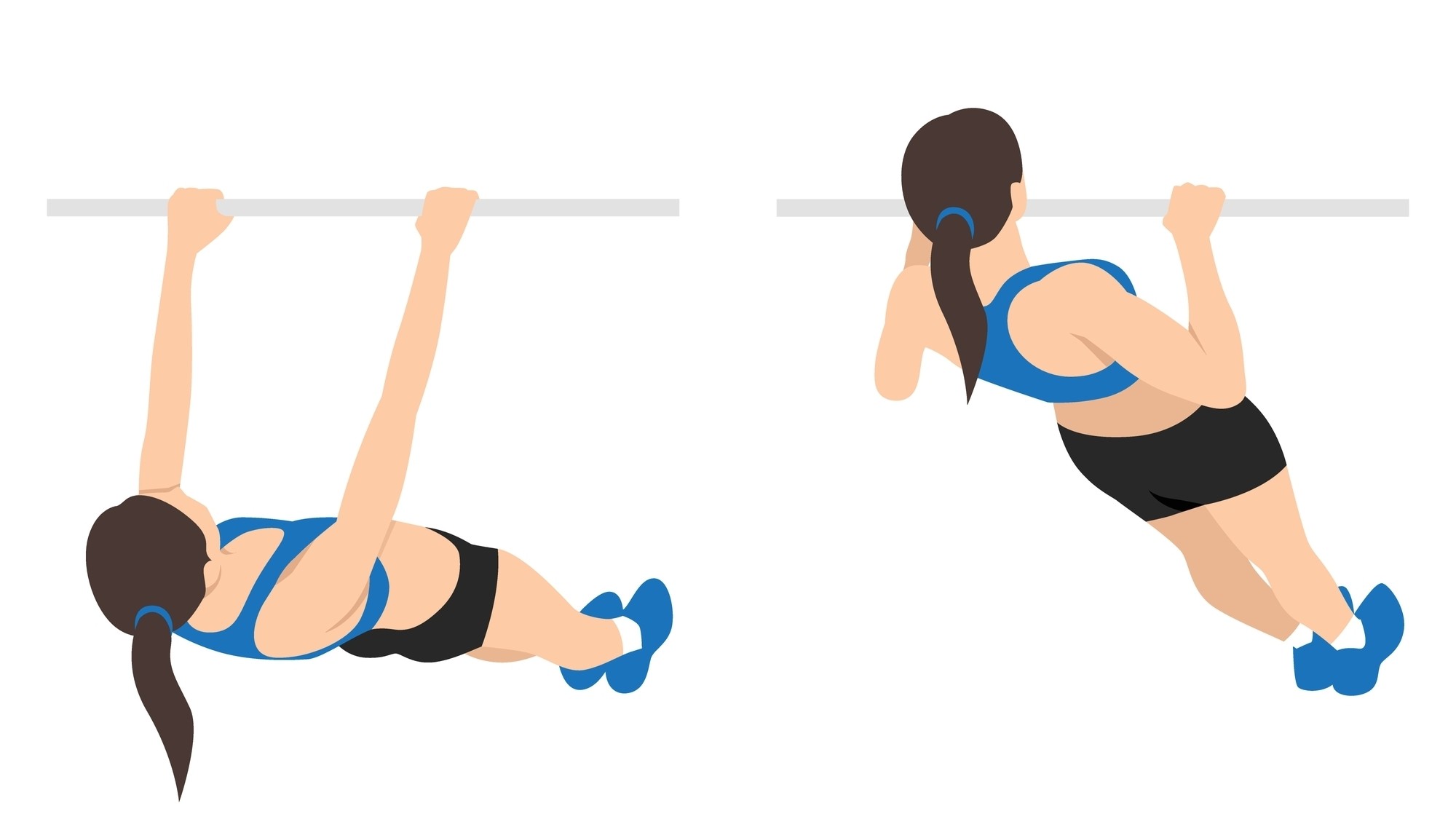
It doesn't matter whether you're exercising without weights by choice or you've been forced to adapt to your surroundings, to truly challenge your muscles and build back strength without weights, you'll need to practice proper muscle engagement while using your body weight.
These seven best bodyweight exercises for strengthening your back help you do just that — without relying on dumbbells, the best kettlebells for weightlifting, barbells, or gym machines — and you’ll just need to exercise smart. These back exercises are functional, using pulling power and plenty of controlled movement to engage as many muscles as possible and hit them hard whether you're in the gym, at home or on the road.

If you’re traveling or short on space or equipment — try these for yourself. We also provide a seven-move bodyweight back workout that only takes 20 minutes wherever you are or whatever your ability. Let’s get stuck in.
What are the 7 best bodyweight back exercises?
When choosing the best back exercises without weights, look for efficiency and maximum engagement. Bodyweight back workouts should (at least, in our opinion) hit your upper, mid and lower back to provide a well-rounded program, and can be called upon for strength and conditioning whenever you’re short on equipment.
Arguably, pushing exercises like push-ups or burpees are easier for fatiguing the pectorals, tricep and anterior deltoids. So, to ensure your pulling power delivers the same job for your back, be clever about ways to build muscle without lifting heavier weights. A strong back helps draw the shoulders back and down, protect and stabilize the shoulders and spine, improve posture and decrease the chances of injury, helping to counterbalance the effects of overtraining your chest.
Your back houses large and powerful muscles like the latissimus dorsi (known as the lats) and trapezius (traps) muscles, so it’s often harder to hit them as hard without weights. You could use TRX suspension trainers and pull-up bars for some of these moves to assist, but make sure you don’t rely on them.
Here are the 7 best bodyweight back exercises for beginners and scaling options for advanced exercisers.
Sign up to get the BEST of Tom's Guide direct to your inbox.
Get instant access to breaking news, the hottest reviews, great deals and helpful tips.
7 best bodyweight back exercises to build strength and muscle
1. Inverted row

You’ll need a stable bar for the bodyweight row exercise. We recommend racking a barbell low to the floor with enough room to lay underneath, but you could get creative if you don’t have a barbell.
How:
- Rack a barbell at thigh height and lay underneath it with your chest aligned with the bar
- Grip the bar with an overhand grip and thumbs wrapped around the bar
- Extend your arms and keep them shoulder-width apart, then engage your core
- Start with knees bent, or to make the move harder, extend them away from you
- Pull your chest toward the bar and squeeze your shoulder blades together
- Pause, keeping a straight line from head to toe, then lower your body back to the starting position.
2. Plank single-arm reverse fly
The anti-rotation exercise challenges your core and hips to keep you stable and square to the mat while working single-sided. The plank challenges your core, and the back and rear deltoids work as you perform the fly. The video above uses dumbbells, but remember to work without weights this time.
How:
- Start in a high plank and squeeze your stomach, quads and glutes to create a solid base
- Lift your right arm away from the floor with a soft elbow bend and raise the arm out to the side
- Squeeze your shoulder and back muscles and keep your hips square
- Lower your arm back down and repeat with the left arm.
3. Prone back extensions

The back extension activates muscles down the posterior chain — the back of the body — including your back, glutes, hamstrings and calf muscles.
How:
- Lay on your stomach and place your hands lightly behind your head
- On an exhale of breath, lift your chest away from the ground and pull your shoulder blades together
- Squeeze your glutes and press your legs into the mat beneath you
- Pause, then lower back to the floor with control
- You could add pulses at the top of the move to make it harder.
4. Pull-ups

It’s the ultimate bodyweight strength exercise and takes some people a lifetime to master. Use a bar or similar. For extra help, you could wrap a resistance band around the bar and loop your foot through it. Otherwise, work with your body weight.
If you’re still learning how to do pull-ups, practice the eccentric variation by jumping up to the bar and slowly lowering yourself until you’re hanging from the bar at the bottom. The technique should help you develop foundational strength while practicing the upward pulling phase. And here’s how to fix them if you think you could be going wrong somewhere.
How:
- Grip the bar in an overhand grip just wider than your shoulders, thumbs wrapped around
- Draw both shoulders back and down and hang from the bar. Focus on contracting as many muscles as you can
- Squeeze your lats, shrug your shoulders and pull yourself up to bring your chin over the bar
- Avoid kipping for a strict pull-up. Pause, then slowly lower back to your starting position.
5. Yoga push-ups

Despite the push-up, this variation also hits your back muscles and requires shoulder stabilization as you move. You only need an exercise mat to do it. Use your knees to practice until you feel comfortable moving on your toes.
How:
- Start in a downward dog position with knees softly bent if you have tight hamstrings
- Engage your core, then slowly bend your elbows, keeping your arms close to your ribs
- Begin lowering your chest through your arms and scoop your bodyweight forward, lifting your chest into a gentle back bend — also known as upward facing dog
- Keep your toes tucked, slightly lift your hips and engage your stomach, glutes and thighs
- Send your hips up and press back into your downward dog.
6. Renegade row and twist
The rotational movement engages the entire torso and tests core strength and stability. Your back muscles work during the row phase of the exercise, and from a plank position, you’ll also hit your shoulders, legs, arms and hips. Follow the steps in the video above, adding a twist if you can. Here's how to do the renegade row properly.
How:
- Start in a high plank position with shoulders stacked over your wrists and abs engaged
- Keep your hips square and chest facing the mat, then bend your right elbow and row your arm toward your hip so that your elbow lifts above your back
- Pause, squeeze the lats, then open your arm outward and twist toward the ceiling, extending your arm toward the sky
- Reverse the movement back down, then repeat on the other side.
- Start on your knees until you feel comfortable with the movement. For an extra challenge, slow the move down.
7. Lateral raise Superman with dead stop
The move activates your back, core and rear deltoids and also uses pushing power to create a well-rounded upper-body exercise that ticks all the boxes. A dead stop simply refers to pushing your bodyweight upward from the ground, lifting your entire weight in one go.
Focus on lifting your body as one unit and keep your hips and chest aligned as you push upward. You could lift one leg into the air to make the move harder, or scale back by keeping both feet down and toes tucked.


- Start on your stomach with your arms extended to the sides
- Engage your core and look toward the top of your mat
- Squeeze your shoulder blades and lift both arms into the air
- Squeeze your glutes and press your legs down. Pause, then lower your arms and place your hands close to your ribs with elbows bent
- Tuck your toes and push the ground away, extending your arms into a high plank position
- Lower to the ground with control for one rep.
Benefits of bodyweight back workouts
We know the best compound exercises could help cut V-shaped back muscles, which is why we focus on targeting multiple muscle groups at once rather than trying to isolate back muscles.
We also understand it’s harder to feel like you’ve worked your back muscles hard using bodyweight exercises alone. So we’ve put together a quick 21-minute workout you can do using the exercises above and hashing together some of the tools we love most when working without weights. Here it is.
7-move back workout without weights
EMOM 7 (every minute on the minute)
7 x Inverted row
7 x Plank single-arm reverse fly
7 x Back extensions
7 x Pull-ups
7 x Yoga push-up
7 x Renegade row and twist
7 x Lateral raise Superman with dead stop
Complete 7 reps of your first exercise within the minute, then on the next minute, start the next exercise. For single-sided back exercises, aim to complete 7 reps per side. Your first round should take 7 minutes. Repeat for 3 rounds. After the first round, assess whether you need to add or reduce reps. You should aim for 10-15 seconds of rest before the next exercise begins.
The reps are a guideline, but more importantly, move with a slower tempo than you're used to. The time under tension technique helps work the muscles through a range of motion for longer and can make even the most basic exercises feel more intense.
More from Tom's Guide

Sam Hopes is a level 3 qualified trainer, level 2 reiki practitioner and senior fitness writer at Tom's Guide. She is also currently undertaking her Yoga For Athletes training course. Sam has written for various fitness brands and websites over the years and has experience across brands at Future such as Live Science, Fit&Well, Coach, and T3.
Having worked with fitness studios like F45 and Virgin Active, Sam now primarily teaches outdoor bootcamps, bodyweight, calisthenics and kettlebells. She also coaches mobility and stretching-focused classes several times a week and believes that true strength comes from a holistic approach to training your body.
Sam has completed two mixed doubles Hyrox competitions in London and the Netherlands and finished her first doubles attempt in 1:11.

